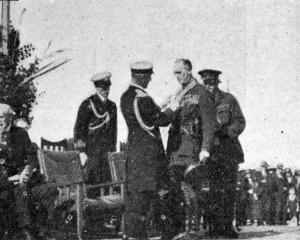
The meeting of the Women Citizens Association, held in the YMCA assembly hall last night, was addressed by Miss B. E. Baughan, who is a member of the Prisons Board and official visitor at the Addington Reformatory, on the subject of "Prisoners’ Reform and After Care." Sir George Fenwick presided over a good attendance. He said that he had accepted the invitation to preside with great pleasure for a three-fold reason: because of his great interest in the subject; because it was due to the personality of Miss Baughan that those who took an interest in the welfare of law-breakers should recognise her as one who had taken an extremely warm interest in these unfortunates; and because of his personal association with Miss Baughan, whom he had first met when mountaineering in the Southern Alps some eight years ago. Miss Baughan said she was going to put before them some of the things she had learned during the past 18 months in her association with the inmates of our gaols. The old ideas of penal treatment were now being supplanted by the new system of remedial treatment. She described how she had first become interested in prison reform through getting in touch with a confirmed thief who possessed a strong artistic temperament. She had reason to believe that it was not from criminal intent that the man stole, but because he had no sense of the value of money. There was a great deal in the idea of finding out the special weakness of the criminal and trying to remedy that. She was coming more and more to think of the prisoner not so much as a delinquent but as a consciousness that was immature. They seemed to need very often just the kind of training that one would give to little children.
PWD to learn from tunnel deaths
The measure of responsibility attaching to the Public Works Department in connection with the disaster at Mangahao was the subject of a question asked by Mr R.A. Wright (Wellington Suburbs) in the House of Representatives this afternoon. He asked the Minister of Public Works (the Hon J.G. Coates) if he were satisfied that the Public Works Department was in no way to blame for the lamentable accident, and if steps were being taken to prevent a recurrence of such a disaster. The Minister replied that the Government would see that full and ample inquiry was made into all the circumstances of the tragedy. Nothing would be hidden, and he hoped that such steps would be taken as would make it impossible for a similar set of circumstances to arise in the future. The newspapers had given a fairly correct account of the affair. The departmental report which he had received showed that one rescue party went after another. Every man in the camp set himself to see what could be done to rescue the unfortunate fellows who had gone under. All the rescuers were most heroic. The members of the party that met with the disaster, continued the Minister, were regarded as one of the finest gangs of tunnellers in New Zealand The dominion had many very experienced tunnellers, who know the game from A to Z. The members of the gang were fine tunnellers, and line men, and they were regarded as being thoroughly reliable in every way. The attempts at rescue had shown what risks men would take when their comrades were in trouble. The dominion had lost some good men, and the Government felt extreme sympathy for their relatives. The Government would do everything that was possible to meet the wishes of the relatives in connection with the last rites.
— ODT, 5.7. 1922












